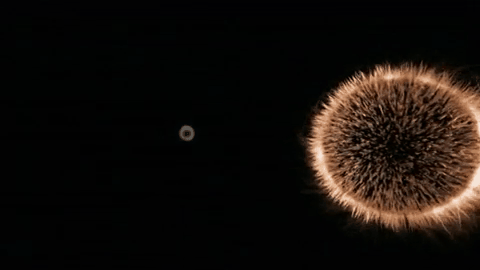
These are the smallest building blocks of matter. The study is published in the journal Nature. Antimatter What is Matter The physical world is composed of combinations of various subatomic or fundamental particles. Stefan Ulmer of the RIKEN Cluster for Pioneering Research, who is spokesperson for the BASE Collaboration, says, “From now on, we plan to further improve the accuracy of our measurements of the spin precession frequency of the antiproton, allowing us to set more stringent constraints on the fundamental invariance of charge, parity and time, and to make the search for dark matter even more sensitive.” The first author of the study, Christian Smorra, says, “For the first time, we have explicitly searched for interaction between dark matter and antimatter, and though we did not find a difference, we set a new upper limit for the potential interaction between dark matter and antimatter.”

Usually, this ought to be consistent in a given magnetic field, and modulation of this frequency could be accounted for by an impact interceded by axion-like particles, which are hypothesized, dark matter candidates. They also estimated property of the antiproton called its spin precession frequency. For the experiment, they utilized a specially designed device, called a Penning trap, to magnetically trap a single antiproton, keeping it from contacting ordinary matter and being annihilated. Scientists wondered whether the absence of antimatter maybe because it interacts differently with dark matter, and set out to test this. One theory is that they are a type of hypothetical particle known as an axion, which has a vital role in explaining the lack of symmetry violation in the strong interaction in the standard model of particle physics. Still, the exact microscopic properties of these particles remain unknown. Another manifestation may be emission of photons from π 0 decays.In the case of dark matter, it is known from astronomical observations that some unknown mass is influencing the orbits of stars in galaxies. What is dark energy What is dark matter Well, if we knew exactly we would have a nobel prize we know that they exist though. Even more positrons are produced from charged pions resulting from the proton annihilation. As a result QN loses positrons to space which annihilate with electrons there.

These photons may be explained by a different mechanism in which QN captures protons which annihilate with antiquarks in the quark core or transform to neutrons thus reducing the QN core charge and increasing QN temperature.

Therefore, electron annihilation in the positron cloud of QNs cannot explain the observed by SPI/INTEGRAL detector photons with energy 511 keV in the center of our galaxy. We show that a strong electric field of antiquark nuggets destroys positronium, hydrogen and helium atoms and prevents electrons from penetrating deeply in positron cloud, thus reducing the probability of the electron-positron annihilation by nearly five orders of magnitude.
#Antimatter vs dark matter free
We study electron-positron annihilation in collisions of free electrons, hydrogen and helium gases with the positron cloud of antiquark nuggets. In this scenario, antiquark nuggets play special role because they may manifest themselves in annihilation with visible matter.

These particles have a very small number density in our galaxy which makes them “dark” to all DM detection experiments and cosmological observations. In this model, dark matter particles are represented by compact composite objects composed of a large number of quarks or antiquarks with total baryon number B ∼ 10 24. We revisit the properties of positron cloud in quark nugget (QN) model of dark matter (DM). We are very pleased to announce that the 2022 European HTCondor Workshop will be held from Tuesday 11th October to Friday 14th October.


 0 kommentar(er)
0 kommentar(er)
